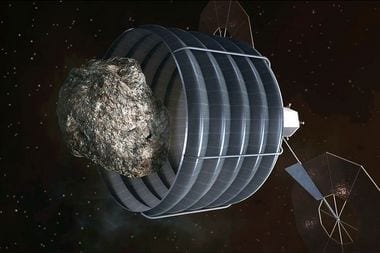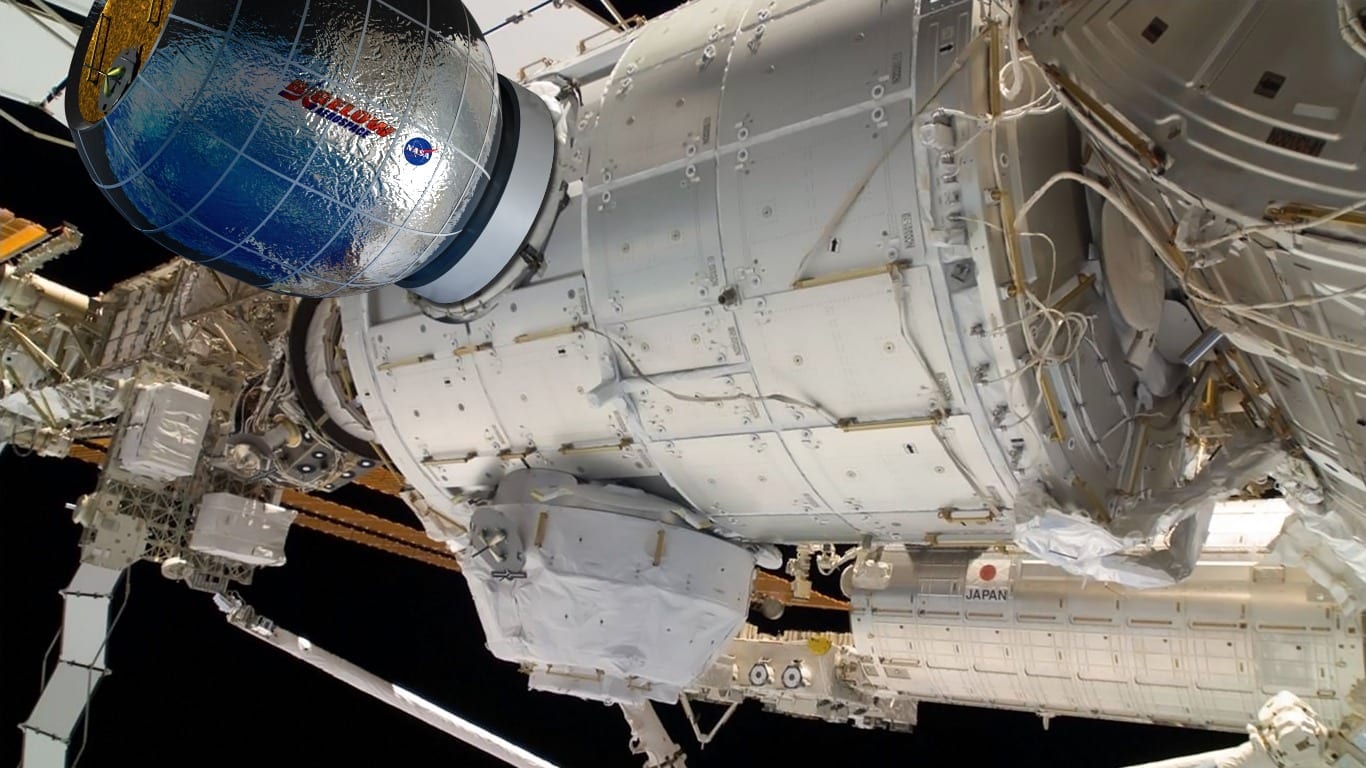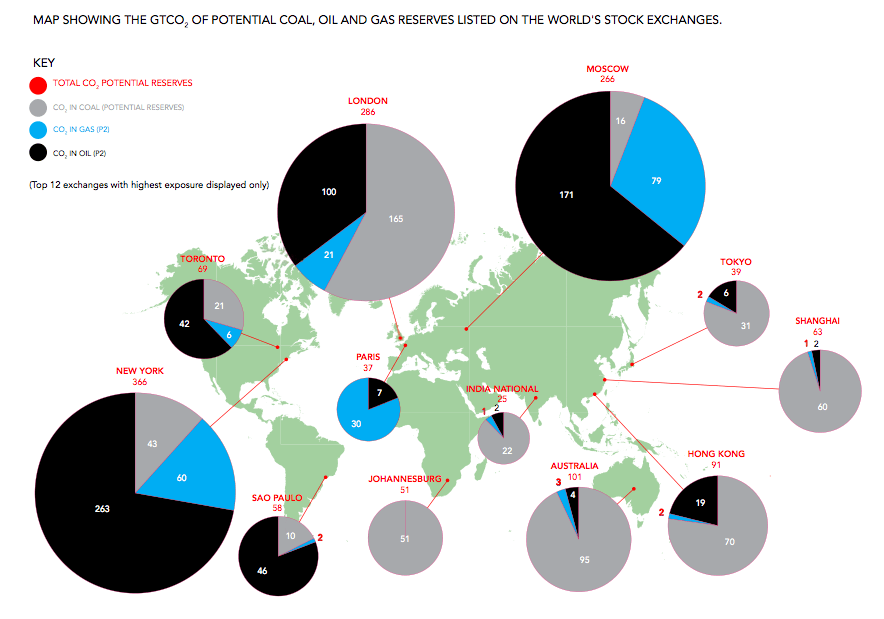
Their gentle, continuous push produces astounding speeds, using only tiny sips of xenon fuel.
Inside cavernous “Tank 5,” a vacuum chamber as big as a subway tunnel at Cleveland’s NASA Glenn Research Center, a soft sapphire glow spilled from the nozzle of an odd-looking spacecraft engine earlier this month.
The turquoise plume was a familiar sight to the engineers running the test. Ion engines, which spout bluish jets of electrically excited atoms rather than chemical flames like a traditional rocket, have been a Glenn specialty for more than 40 years. Their gentle, continuous push produces astounding speeds, using only tiny sips of xenon fuel.
A Glenn-designed ion engine enabled NASA’s Deep Space 1 probe to swoop past a distant comet for a close-up look in 2001. And the Glenn ion-powered Dawn spacecraft is 260 million miles from Earth, streaking toward a flyby of the dwarf planet Ceres in 2015 and breaking Deep Space 1’s acceleration record along the way.
But the most audacious assignment for the Cleveland center’s ion engines is ahead, as NASA revealed April 10.
Later this decade, a robot spacecraft riding a Glenn engine’s cobalt ion stream will aim for an asteroid circling a million or so miles from Earth. It will nuzzle up to the tumbling, dump truck-sized rock, unfurl a fabric grab-bag to snare it like a Venus flytrap, then fire up the ion engines and haul the asteroid into orbit around the moon.
There, as early as 2021, astronauts will dock with the captive space boulder. They’ll chip off chunks for study and possibly extract water and valuable minerals.
The White House-backed asteroid-lassoing mission sets a clear near-term space exploration goal for an agency that critics said had been floundering since the retirement of the shuttle fleet and President Barack Obama’s 2010 cancellation of NASA’s Constellation moon-landing program.
If Congress goes along, the asteroid-capture effort will mark the first time humans try to alter the path of a celestial body – a crucial step, NASA says, in learning how to deflect much bigger “planet-killer” asteroids and comets. The space agency also touts the project as a testbed for technologies needed to reach deeper-space destinations such as Mars, a boost for commercial and international partnerships, and a chance to mine asteroids for rocket fuel ingredients, precious minerals and other hidden resources.
It also raises the fortunes of Cleveland’s NASA center within the space agency. “The president wants us to put an astronaut on an asteroid by 2025 and here Glenn is right in the middle of that,” said center director James Free. “The work we do is very unique. Glenn has the technology this agency needs to move forward.”
NASA plans to pump $38 million into the Cleveland center in 2014 to speed up development of the more powerful ion engines needed for the asteroid-capture mission. The technology is formally called solar-electric propulsion, or SEP, because it uses the sun’s energy, collected by solar panels, to generate the electricity required to make and expel ions to push the spacecraft. While chemical rockets are more powerful, ion engines are far more efficient, making them the practical choice for such a long-distance flight.
In December, a small team of Glenn engineers quietly began planning the work the center will undertake as it leads the effort to accelerate SEP for the asteroid-capture mission. Making the necessary improvements will be “very challenging,” but achievable, Free said.
The most powerful ion engines currently flying on commercial satellites operate on about 25 kilowatts of electricity, or roughly 250 times the energy needed to make a household light bulb glow. To snag a million-pound asteroid and push it into lunar orbit will take a 50-kilowatt power system, plus large, extremely lightweight solar panels; compact, reliable power-processing equipment to manage the high electrical loads; and thrusters that withstand weeks or months of firing during the multi-year flight.
“It’s taking that junior SEP system and cranking it up,” Free said.
Working closely with NASA’s Jet Propulsion Laboratory in California, the Glenn team aims to build and test prototype “engineering models” of the propulsion components in 2014.
The Latest Bing News on:
Asteroid-snaring mission
- Laser on NASA's Psyche asteroid probe beams data from 140 million miles awayon April 26, 2024 at 10:00 am
Basically, they launched a spacecraft toward an asteroid that could very well be made entirely of metal, a composition that appears to be a rarity — at least, in our solar system's vicinity. The ...
- Nearby asteroid's birthplace traced to specific crater on the Moonon April 26, 2024 at 1:55 am
Many asteroids can be traced back to their parent body – the planet or moon they broke off from. But for the first time, scientists now claim to have traced the origins of an asteroid back to the ...
- Asteroid debris from NASA's successful DART mission may strike Marson April 14, 2024 at 11:38 am
DART mission successfully deflected an asteroid's path by deliberately colliding with it, but Mars may suffer unintended consequences.
- Debris From NASA Asteroid Collision May Hit Marson April 9, 2024 at 10:28 am
NASA/ ISTOCK / GETTY IMAGES PLUS Dimorphos is 525 feet in diameter, and orbits a larger, 2,560-foot asteroid known as Didymos. The DART mission was designed to test how slamming a spacecraft into ...
- NASA mission to deflect asteroid 'may have accidentally started game of space billiards'on April 5, 2024 at 7:40 am
In September, 2022, NASA deliberately flew the 1,200-pound DART spacecraft into the asteroid Dimorphos. The mission successfully demonstrated the ability to change the course of an asteroid ...
- NASA's 'Armageddon' mission backfires! DART asteroid deflection test created a cloud of giant boulders that are set to crash into Marson April 4, 2024 at 1:32 pm
A pair of Italian astronomers found that when the Double Asteroid Redirection Test (DART ... During the DART mission, NASA used an uncrewed spacecraft to slam into Dimorphos at 14,000 miles ...
- Nasa's Dart mission to blast asteroid off course created debris that will smash craters into Marson April 4, 2024 at 3:10 am
The Double Asteroid Redirection Test (Dart) slammed a spacecraft into a small asteroid to look at the possibility of defending Earth from outer space. The asteroid - named Dimorphos - posed no threat ...
- NASA makes stunning move on Asteroid Bennu samples after OSIRIS-REx mission successon April 2, 2024 at 8:42 pm
After trying for a long time, NASA's on team finally opened the container holding Asteroid Bennu samples. Scientists worldwide can access them now. Asteroid Bennu is back in the news again and ...
- Life after asteroid Bennuon March 30, 2024 at 10:00 pm
Next to them is an oversize cover of his new book, “The Asteroid Hunter: A Scientist’s Journey to the Dawn of Our Solar System.” Part mission report, part memoir, the book tells the story of ...
- Powerful Spacecraft Impact Turned Squashed Ball-Shaped Asteroid Into an Oblong Watermelonon March 29, 2024 at 5:18 pm
The mission I'm talking about was called Double Asteroid Redirection Test, or DART. It launched in November 2021 on top of a SpaceX Falcon 9 rocket. Less than a year later, in September 2022 ...
The Latest Google Headlines on:
Asteroid-snaring mission
[google_news title=”” keyword=”asteroid-snaring mission” num_posts=”10″ blurb_length=”0″ show_thumb=”left”] [/vc_column_text]The Latest Bing News on:
Ion engines
- Likely cause of Franklin house fire raises safety concerns surrounding lithium-ion batterieson April 26, 2024 at 4:33 pm
F RANKLIN, Tenn. (WSMV) - Williamson County Fire and Rescue crews were called to a house fire in Franklin just after 8 p.m. Thursday. Authorities say the cause of the fire is likely from lithium-ion ...
- Phantom Fury review: a retro shooter obsessed with inconsequential do-hickeyson April 26, 2024 at 9:23 am
Phantom Fury is a retro first-person-shooter that sometimes falters but makes up for it with strong devotion to detail ...
- The new engine that will revolutionize Formula E: This electric battery is the key to everythingon April 24, 2024 at 7:30 am
This new electric battery has come to put an end to semi-solids: more powerful than ever and expanded autonomy ...
- Battery and charging innovations driving electrificationon April 24, 2024 at 1:59 am
The urgency of mitigating climate change and reducing greenhouse gas emissions has prompted businesses to adopt more sustainable transportation solutions, particularly electric vehicles (EVs). Lithium ...
- ACCC calls for stronger protection laws as more fires are being sparked by lithium-ion batterieson April 23, 2024 at 12:51 pm
Van Andel and her younger brother were sitting on their couch when a toy car powered by a lithium-ion battery exploded while on charge in December last year. It's just one of more than 1,000 fires ...
- To lower emissions, a Minnesota startup wants to convert diesel engines to burn ammoniaon April 23, 2024 at 3:00 am
Ammonia doesn’t emit carbon dioxide when burned, but its energy-intensive production mostly relies on fossil fuels, so its benefits depend on sourcing “green” ammonia from renewable power.
- Lithium ION Energy Ltd IONon April 22, 2024 at 4:14 am
Morningstar Quantitative Ratings for Stocks are generated using an algorithm that compares companies that are not under analyst coverage to peer companies that do receive analyst-driven ratings ...
- Bursting into flames: Protect yourself from lithium-ion battery hazardson April 19, 2024 at 4:59 pm
Powering my cellphone? A lithium-ion battery. E-bike? Lithium-ion. Same goes for my iPad, MacBook, electric toothbrush, portable battery pack. I could go on. The same goes for your tech.
- Fire in truck carrying lithium ion batteries triggers 3-hour evacuation in Ohioon April 18, 2024 at 4:28 pm
Police began evacuating a several-block area west of downtown shortly after 7 a.m. and closed off several highway exits near the Scioto River. Officers went door-to-door to alert residents about ...
- Florence Ion's postson April 17, 2024 at 5:00 pm
A new dongle for the 4K streaming crowd could arrive sometime this year. The Pixel 8a may have the same camera as last year and cost $50 more. It's fun whether you're a content creator or someone ...
The Latest Google Headlines on:
Ion engines
[google_news title=”” keyword=”ion engines” num_posts=”10″ blurb_length=”0″ show_thumb=”left”]










